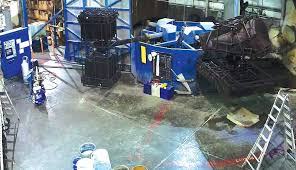Exploring the Advantages of Hollow Structures: Insights into Rotational Molding
Rotational molding, often known as rotomolding, is actually a exclusive production procedure utilized for producing hollow plastic material merchandise. This procedure provides unique pros over other molding strategies, making it well-known in a variety of industries. Here’s all that you should learn about rotational molding:
Process Guide:
Rotational Molding entails four primary methods: loading, heating, chilling, and unloading. Firstly, powder resin is filled right into a hollow mildew. The mold is going to be heated up and rotated concurrently in multiple axes. As being the mold rotates, the resin melts, covering the inner surfaces consistently, creating the preferred design. After the resin cools and solidifies, the mildew is opened, along with the concluded item is extracted.
Advantages:
Design and style Overall flexibility: Rotational molding provides for intricate styles and complicated geometries, so that it is suitable for production a wide array of products, from storage space tanks to toys.
Standard Wall structure Size: In contrast to other molding strategies, rotational molding ensures consistent wall density, contributing to merchandise with steady durability and strength.
Price-Performance: Tooling fees for rotational molding are relatively reduced in comparison with other techniques like shot molding, especially for big and sophisticated pieces.
Material Versatility: A variety of thermoplastic supplies may be used in rotational molding, including polyethylene, Pvc material, and nylon material, providing adaptability in product or service features like power, overall flexibility, and substance level of resistance.
Applications:
Rotational molding realizes programs across varied businesses:
Auto: Used for manufacturing gas tanks, atmosphere tubes, and indoor components.
Aerospace: Generates lightweight, tough parts for airplane interiors.
Agriculture: Produces h2o tanks, fertilizer tanks, and agricultural gear.
Playthings and Sport: Creates play ground equipment, kayaks, and wearing merchandise.
Health-related: Manufactures durable health-related gear like freedom assists and sanitation merchandise.
Problems:
Despite its positive aspects, rotational molding provides some obstacles:
Pattern Time: The process could be time-eating as a result of slow heating and air conditioning essential, restricting production prices.
Fabric Waste materials: Extra materials may be generated during trimming and finishing, ultimately causing greater materials costs.
Limited Materials Choice: Although functional, rotational molding is primarily best for thermoplastics, constraining fabric options when compared with other techniques.
In conclusion, rotational molding can be a adaptable producing method providing design flexibility, cost-performance, and materials adaptability. Its great deal of apps across various industries underscores its relevance in contemporary production.


